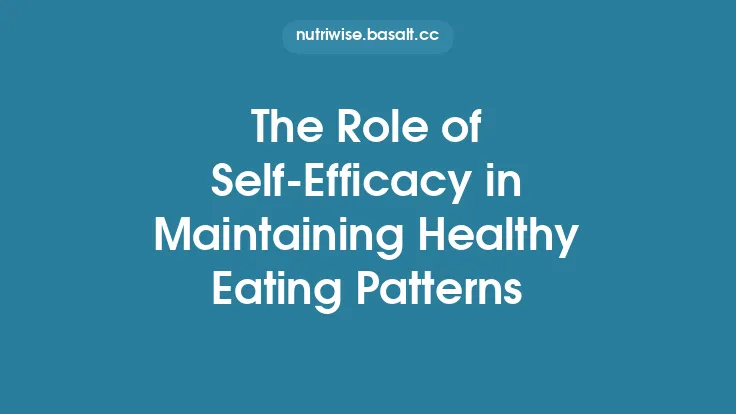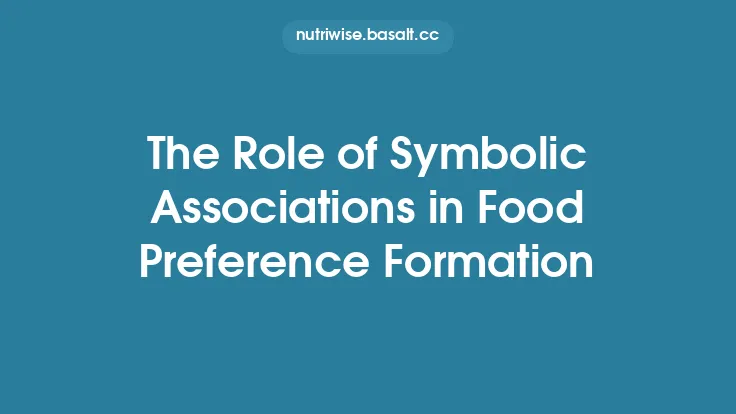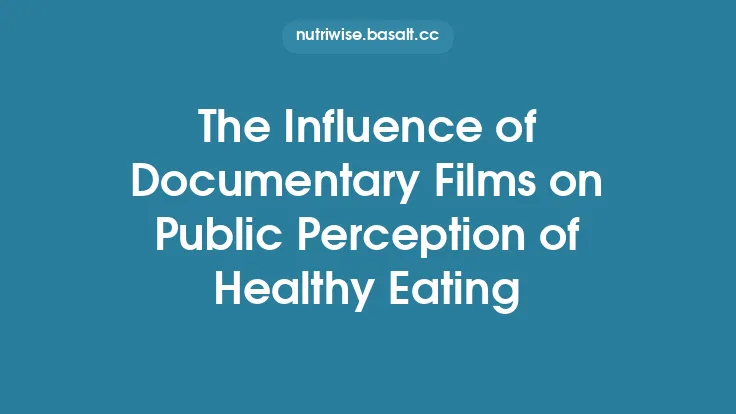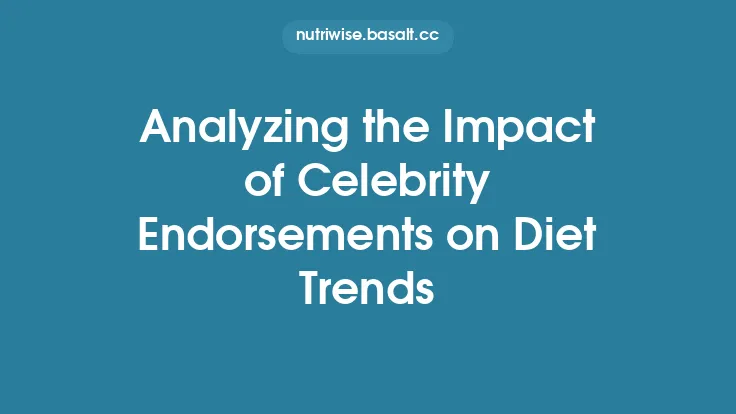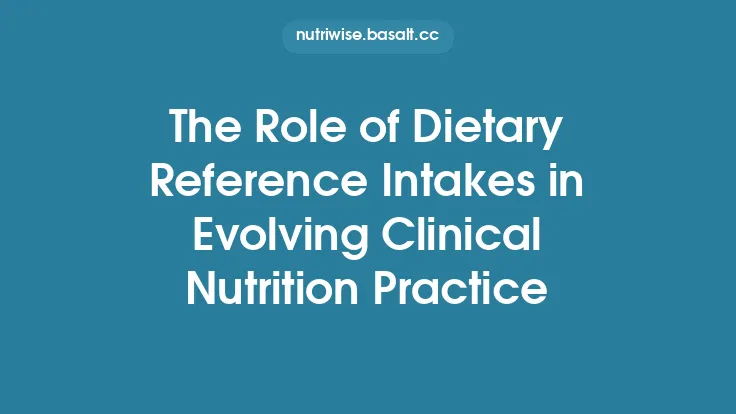Social media has become the primary arena where people encounter, discuss, and ultimately adopt ideas about what they should eat. Unlike traditional media, which delivers a relatively uniform message to a broad audience, social platforms operate through complex, user‑driven networks that continuously reshape dietary narratives in real time. This article explores the mechanisms by which social media influences modern diet perceptions, the structural features of platforms that amplify certain messages, and the broader implications for nutrition science, public health, and food policy. By focusing on evergreen principles—those that persist regardless of fleeting trends—we aim to provide a comprehensive understanding of the enduring role social media plays in shaping how we think about food.
Algorithmic Curation and Content Visibility
At the heart of every major social platform lies an algorithm that decides which posts appear in a user’s feed. These algorithms are not neutral; they are optimized for engagement metrics such as likes, comments, watch time, and shares. When a piece of dietary content—whether a recipe, a scientific summary, or a personal testimony—generates high engagement, the algorithm is more likely to surface it to a wider audience. This creates a feedback loop:
- Engagement‑Driven Amplification – Content that provokes strong emotional reactions (e.g., surprise, awe, or controversy) tends to be promoted more aggressively. A striking before‑and‑after photo of a weight‑loss journey, for instance, can quickly dominate a feed, regardless of the underlying scientific validity.
- Personalization Filters – Algorithms learn from a user’s past behavior (clicks, dwell time, saved posts) to tailor future recommendations. If a user frequently interacts with low‑carb content, the platform will prioritize similar posts, reinforcing a specific dietary worldview.
- Network Effects – Posts that are shared across multiple social circles gain additional weight in the algorithm’s ranking, further extending their reach beyond the original audience.
Because these mechanisms are built into the platform’s architecture, they persist even as specific trends rise and fall. Understanding algorithmic curation is therefore essential for grasping why certain diet narratives become dominant and how they sustain themselves over time.
Community Formation and Peer Influence
Social media enables the rapid formation of niche communities centered around shared dietary interests—keto, plant‑based, intermittent fasting, and many others. These communities function as micro‑ecosystems where members exchange recipes, success stories, scientific articles, and personal challenges. Several dynamics within these groups shape diet perceptions:
- Social Proof – When a large proportion of community members endorse a particular eating pattern, newcomers interpret this consensus as evidence of efficacy, even in the absence of rigorous data.
- Normative Pressure – Regular exposure to community norms (e.g., posting daily meal photos) can create subtle pressure to conform, influencing both food choices and the language used to describe them.
- Collective Knowledge Building – Communities often curate resources, creating shared repositories of articles, infographics, and expert interviews. Over time, these repositories become reference points that shape members’ understanding of nutrition concepts.
These peer‑driven processes are distinct from traditional advertising or celebrity endorsement; they arise organically from user interaction and are reinforced by the platform’s design that encourages community building (e.g., groups, sub‑reddits, hashtags).
Visual Storytelling and Food Aesthetics
The visual nature of platforms such as Instagram, TikTok, and Pinterest has elevated food aesthetics to a central role in diet perception. High‑resolution images, short‑form videos, and stylized layouts convey more than just the appearance of a dish; they embed cultural meanings and health connotations.
- Color Coding – Bright, saturated colors (e.g., vivid greens for salads, deep reds for beetroot) are often associated with freshness and nutritional value, influencing viewers’ assumptions about healthfulness.
- Narrative Framing – A short video that shows the preparation of a “clean‑eating” bowl, accompanied by upbeat music and captions highlighting “detox” benefits, creates an implicit narrative that the food is inherently beneficial, regardless of its actual macronutrient composition.
- Temporal Compression – Time‑lapse cooking videos condense complex preparation processes into seconds, giving the impression that healthy meals are quick and effortless, which can reshape perceptions of feasibility.
Because visual cues are processed rapidly and often subconsciously, they have a lasting impact on how audiences evaluate dietary options, reinforcing certain food choices as socially desirable or aspirational.
Data‑Driven Personalization of Dietary Content
Beyond simple engagement metrics, many platforms now incorporate sophisticated data analytics to personalize content at a granular level. This personalization can be broken down into three primary layers:
- Behavioral Data – Clickstreams, search queries, and interaction histories reveal a user’s explicit and implicit interests. For example, repeated searches for “low‑sugar desserts” signal a preference that the algorithm will satisfy with related posts.
- Contextual Signals – Time of day, geographic location, and device type inform the platform about the user’s current context, allowing it to surface content that aligns with immediate needs (e.g., “quick breakfast ideas” in the morning).
- Predictive Modeling – Machine‑learning models predict future interests based on patterns observed across similar users. If a cohort of users who engage with plant‑based recipes also shows interest in sustainability topics, the algorithm may begin recommending eco‑focused diet content to new members of that cohort.
These layers create a highly tailored diet information environment, where each user’s feed becomes a curated diet narrative that evolves with their behavior. The personalization is evergreen in the sense that it continuously adapts, ensuring that diet perceptions remain dynamic and individualized.
Platform‑Specific Dynamics
While the overarching mechanisms described above apply across social media, each platform introduces unique affordances that shape diet perception in distinct ways.
- Instagram – Emphasizes static images and carousel posts, fostering a culture of “food photography.” The platform’s Explore page and hashtag system enable rapid discovery of diet trends, while Stories and Reels add a temporal dimension for behind‑the‑scenes content.
- TikTok – Prioritizes short, algorithmically curated video streams. The “For You” page can catapult a single 15‑second recipe or nutrition tip to viral status, often accompanied by trending audio tracks that embed the content in broader cultural moments.
- Reddit – Structured around topic‑specific sub‑communities (e.g., r/nutrition, r/vegan). The upvote/downvote system provides a community‑driven quality filter, and long‑form discussion threads allow for nuanced debate and citation of scientific sources.
- Pinterest – Functions as a visual search engine. Users pin “diet boards” that act as personal repositories, and the platform’s recommendation engine surfaces related pins based on visual similarity, reinforcing aesthetic-driven diet narratives.
Understanding these platform‑specific dynamics is crucial for interpreting how diet information spreads, persists, and evolves within each digital ecosystem.
Feedback Loops Between Industry and Social Media
Food manufacturers, supplement companies, and health‑tech startups have learned to leverage social media not merely as a marketing channel but as a data source. Two primary feedback mechanisms illustrate this relationship:
- Social Listening – Brands monitor hashtags, comments, and sentiment trends to gauge consumer attitudes toward ingredients, dietary patterns, and emerging health concerns. This intelligence informs product development (e.g., launching a “plant‑based protein bar” after detecting a surge in plant‑based diet discussions).
- Co‑Creation and Sponsored Content – Companies partner with content creators to produce “authentic” posts that blend brand messaging with user‑generated style. While this practice can blur the line between editorial and promotional content, it also provides brands with real‑time performance metrics that guide future campaigns.
These loops create a symbiotic environment where industry influences diet narratives, and social media data, in turn, shapes industry strategies—an ongoing cycle that reinforces certain dietary perceptions over time.
Implications for Public Health Research and Policy
The pervasive influence of social media on diet perception presents both challenges and opportunities for public health stakeholders.
- Surveillance Opportunities – Aggregated social media data can serve as a real‑time indicator of emerging dietary trends, enabling researchers to track the diffusion of new eating patterns before they appear in traditional surveys.
- Rapid Dissemination of Evidence – Nutrition scientists can leverage platforms to share peer‑reviewed findings in accessible formats, potentially counterbalancing misinformation with credible content.
- Policy Design Considerations – Understanding algorithmic amplification mechanisms can inform regulatory approaches that encourage transparency in content ranking, especially for health‑related posts.
By integrating social media analytics into public health frameworks, policymakers can develop more responsive and evidence‑informed interventions that align with the ways people actually receive nutrition information.
Future Directions and Emerging Technologies
Looking ahead, several technological developments are poised to further shape how social media influences diet perceptions:
- Augmented Reality (AR) Food Filters – Platforms are experimenting with AR lenses that overlay nutritional information onto real‑world meals captured through a camera, providing instant feedback on calorie or macronutrient content.
- AI‑Generated Content – Large language models can produce diet‑related posts, recipes, and even personalized meal plans at scale. While this democratizes content creation, it also raises concerns about the provenance and accuracy of the information.
- Decentralized Social Networks – Emerging blockchain‑based platforms promise user‑controlled data and content moderation, potentially altering the dynamics of algorithmic curation and community governance.
These innovations will likely deepen the integration of nutrition information into everyday digital interactions, making the role of social media in shaping diet perceptions an even more central component of modern food culture.
Conclusion
Social media’s influence on modern diet perceptions is rooted in its algorithmic architecture, community dynamics, visual storytelling, and data‑driven personalization. These evergreen mechanisms operate across platforms, continuously shaping how individuals interpret, adopt, and discuss dietary information. While the landscape is ever‑changing, the fundamental processes that drive diet perception on social media remain consistent, offering valuable insights for researchers, health professionals, and policymakers seeking to navigate the complex interplay between digital media and nutrition. By recognizing and engaging with these underlying forces, stakeholders can better harness the potential of social media to promote accurate, evidence‑based dietary knowledge while mitigating the spread of misconceptions.
